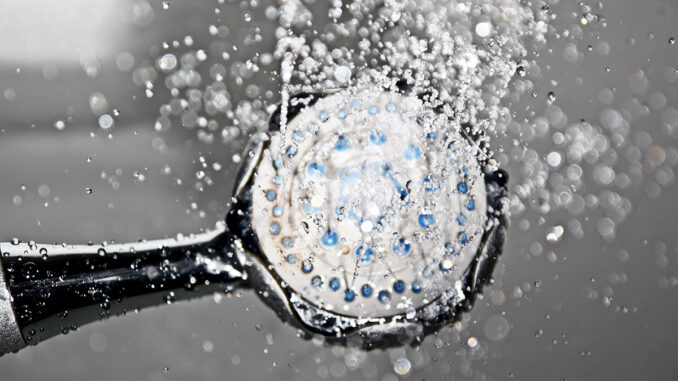
EarthTalk®
From the Editors of E – The Environmental Magazine
Dear EarthTalk: What’s up with all the debate lately as to the flow allowed in new showerheads? — Bill G., New York, NY
The shower is a place of rejuvenation and relaxation for many of us, but it is also a big water hog, accounting for roughly 17 percent of the average U.S. household’s water usage. Of course, we use a lot less water in our showers nowadays thanks to a Clinton-era law mandating that new showerheads sold in the U.S. could not top a flow rate of 2.5 gallons per minute (GPM). While some showerhead manufacturers attempted to circumvent these new restrictions by utilizing multiple nozzles, the federal government eventually revised the legislation (in 2013) to limit entire fixtures to 2.5 GPM.
During his term in the White House, Donald Trump often complained about his dissatisfaction with the water pressure in his showers. In December 2020 Trump reversed the Obama-era amendment; this restored the federal limit of 2.5 GPM to be applied to individual nozzles instead of the entire fixture. This meant that a shower head with three nozzles would be permitted to use 7.5 GPM.
Although Trump’s law did not have a significant impact on the market demand for luxury shower heads, the loophole posed detrimental environmental impacts. Americans take about 200 million showers every day. The Alliance of Water Efficiency estimates that under Trump’s rule the country’s water usage would increase by 161 billion gallons per year. An increase in water usage also results in more energy use to heat that water, which in turn increases greenhouse gas emissions.

According to the U.S. Environmental Protection Agency (EPA), homes that have switched out older less efficient showerheads with newer models have realized savings of some 2,700 gallons of water per year. This equates to a savings of 330 kilowatt hours of electricity annually, which is enough to power an entire house for 11 days. The Natural Resources Defense Council (NRDC) estimates that the average American household stands to save $500 per year on utility bills after switching to low-flow shower heads. The group estimates that the nationwide transition to lower flow showerheads now underway can generate annual savings of $2.9 billion in water utilities and $2.5 billion in energy costs.
Saving water by using a low-flow shower head is a great start, but if you’re looking for more ways to maximize your impact, the EPA has a few suggestions. When it comes to appliances, making sure to fix leaks is one easy way to save water. Additionally, whenever you need to run your dishwasher or washing machine, make sure you are optimizing for water- and energy-efficiency by only running it with a full load. Lastly, landscaping is always a talking point when it comes to reducing residential water use. If you have a lawn, it is recommended to save water by replacing it with native plants that don’t require additional watering. If you’re not ready to part with your lawn, the EPA suggests keeping the grass two to three inches high to ensure the soil retains water, reducing the need for frequent watering.
CONTACTS: Water Conservation Tips for Residents, www3.epa.gov/region1/eco/drinkwater/water_conservation_residents.html; 10 Ways To Save Water At Home, americanrivers.org/rivers/discover-your-river/top-10-ways-for-you-to-save-water-at-home/;
Trump showerhead rule on more water flow goes down the drain, apnews.com/article/trump-showerhead-rule-reversed-biden-6b6dc448e974a948cdcad3d43bfccbe3; DOE Proposes Reversal of Trump-Era Showerhead Rule, nrdc.org/media/2021/210716.
EarthTalk® is produced by Roddy Scheer & Doug Moss for the 501(c)3 nonprofit EarthTalk. See more at https://emagazine.com. To donate, visit https//earthtalk.org. Send questions to: qu******@ea*******.org.




Be the first to comment